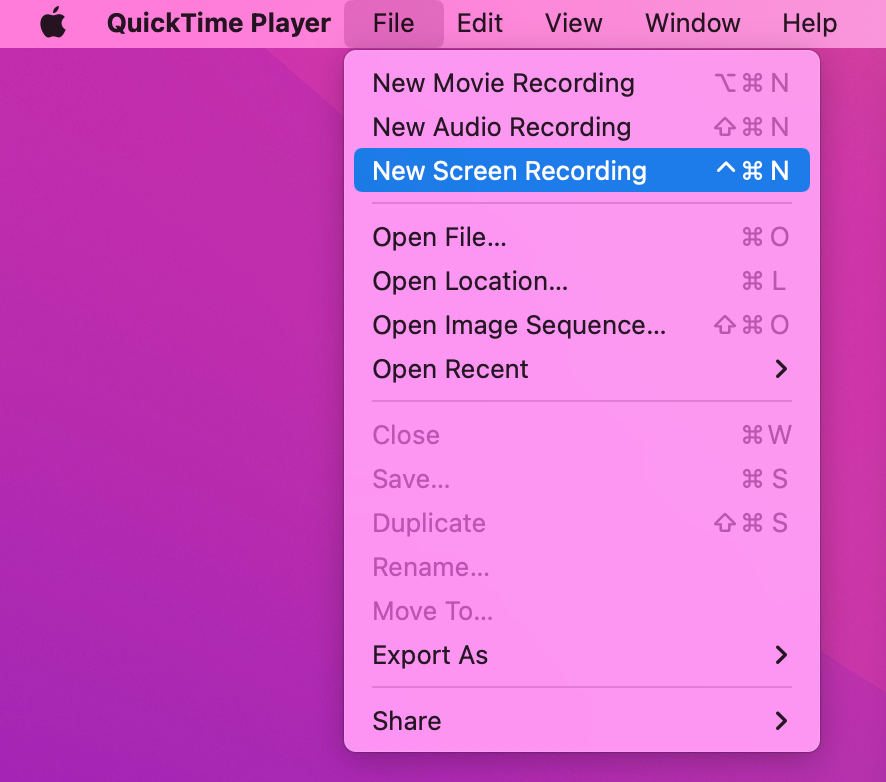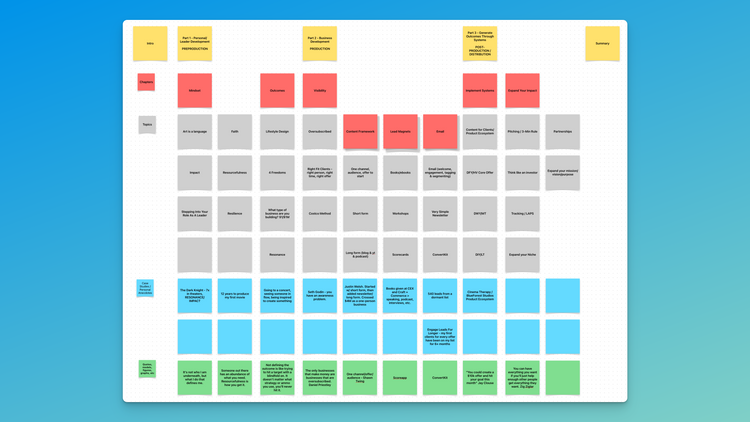How To Create And Launch An Online Course In The Next 2 Weeks

You see everyone around you making money creating and selling online courses, but don't know where to even start when it comes to making your own.
There's so much involved!
- choosing a topic
- creating an outline (how much detail??)
- creating visual assets
- filming the course (lights? sound? camera? What do I need?)
- editing
- choosing a platform
- creating the landing page
- etc etc
Just looking at all of that can be overwhelming, but in this post I'll break down a very simple process - that you can steal - that will help you create your first online course.
By the end of this process you'll have a recorded, screencast version of a course that you can sell for $50-150 to your audience.
Let's do this!
Course Creation Framework
Here's a quick breakdown of the process:
- Choose a topic you know your audience wants you to teach them about
- Create the structure of your course using questions and a simple outline
- Create the visual assets that you'll use for your course
- Do a run through before filming
- Record the course
- Edit the course
- Choose a platform and upload your course
- Build a landing page that sells
- Market and sell your course to your audience
If you look at it all at once it seems daunting, so let's take it one step at a time.
Choose a Topic You Know Your Audience Wants
The simplest way I've found to do this: ask them.
Whether you have 100, 1,000, or 10,000+ people that follow you and your content, just ask them! Here are a few questions I like to use:
- what is the one outcome you're working towards?
- what's been the biggest frustration about trying to achieve it?
- what would you like to learn from me?
Once you do this, compile all of the answers and see where there are duplicates or where many people are asking the same question.
That's a strong signal to the topic of the course your audience wants from you.
I strongly encourage you to create a course that you know your audience wants, something that solves their problem, rather than creating a course that you think your audience would want.
If your audience tells you something, listen.
Create the structure of your course using questions and a simple outline
The best short courses solve a single problem. Some can get by with two or three, as long as they're related, but I would avoid a course on "how to write a book" that also includes a module on "how to grow your audience".
Those are two big topics that would require much more time to do them justice.
So, look at all of the answers from your audience, and pick one outcome that your course is going to help them achieve.
Now, to create your outline, work backwards from that outcome by asking the question, "what comes before that?"
Ask that question over and over again until you get to a nice entry point.
So, for a course about writing and self-publishing a book, an outline could look like this:
- Find a topic & title for your book
- Create an outline
- Write your first draft
- Edit what you wrote
- Write the second draft
- Hire a developmental editor to get to a solid final draft
- Line edit your book
- Design your book cover and interior layout
- Upload your finished book to a site for hosting and selling
- Create a sales page for your book and launch to your audience
You could cover all of that content in a 1-2 hour presentation - or course - that helps a new writer get a very clear picture of the process of writing a book.
You could even call it "how to write and publish a book in the next three months".
Once you have the big picture bullet points, go one to two levels deeper on what each section will teach to your student. Go into as much detail as you need to be able to use this outline as a guide for your recording session.
Create the visual assets that you'll use for your course
Now that you have an outline for your course, it's time to think about the content.
What are you going to show on screen to help your teaching process?
Images? Videos? Diagrams? Slides?
There's no right or wrong approach here, it's all about what serves your student the best.
You can open up your website and show them how you write an article.
You can dive into an analytics site like ahrefs and show people how to use it.
You can create an NFT in real time and screen-record the whole process.
Or you can gather a bunch of example images that show the outcome you're trying to help people achieve.
Have fun with this part of the process, and this is where you could take a few extra hours, or use that free "10th day" in your schedule to really go above and beyond here.
One thing to remember about slides - the less text on screen the better. You want people listening to you, not reading paragraphs on the screen.
Do a run through before filming
There are two ways you can approach this, one I like more than the other.
You could hit record on your phone, or laptop/computer, and start talking.
It's a great option, because as you go through your course, you'll see where you get caught up on an idea that isn't quite fleshed out, or are missing a graphic, or have a story you want to inject, etc.
There are things that only pop up when you are going through the motions of presenting the course.
That's option 1.
Option 2 is to do it live.
Invite some VIP members of your audience, or some close friends and family members, and hop on a zoom or google meet call, and present your course live.
Heck, you could even charge for it and throw in a Q&A after the presentation, depending on how long you think your course will be.
I'd aim for about 60-90 minutes of content.
Then you not only get the internal feedback of what's missing and what should change before you record the course, but you can get external feedback as well from your audience.
Two birds, one live call.
After this run-through, go and make any adjustments to your outline or your materials before recording the course "for real".
Record the course
Too many people get bogged down with this step. They spend all this time researching equipment and recording setup, then look at the cost as prohibitive, and stop pursuing a course before they even start.
Don't do that to yourself.
Daniel Vassallo created a course called Everyone Can Build A Twitter Audience and sold it for ~$50. (He experiments with price often, so as of this writing it's only $25...)
It's a 96 minute screen recording using the camera and mic on his computer/laptop.
Mainly a powerpoint presentation.
But, to date, he's sold hundreds of thousands of dollars of this one course. It's one of the best-selling courses on Gumroad of all time.
It's less about the production value, and more about the content. And this, coming from a film producer...
Your phone is plenty camera for a high-quality recording. Use that instead of your built-in computer camera if you want to upgrade the image.
Sit with a light or window facing you, rather than behind you, to get the best look.
Get as close as you can to your microphone, and try not to be in a big, reverberant (noisy) room like a kitchen with tile floors, or a big two-story high living room.
Then, hit record.
You can use software like Loom or Detail to record yourself, or you can hit record on your phone (use the back cameras, not the front camera), and do a screen recording on your Mac using Quicktime

Then you can edit together the two files in the next step.
The automatic settings on your camera and microphone will be fine, but you can use a pair of headphones with a microphone to get the mic even closer to your mouth.
Seriously, for this first course, use what you already have. Your phone and your laptop are more than enough to create a massively successful course.
Pro Tip: Add 10-20% more energy when you're on camera than you normally speak with. It will help you come across the way you want on camera, while not fully transforming into someone unlike you're normal persona.
Edit the course
If you did one, long, 60-90 minute recording, editing is going to be a breeze!
Use some free software like iMovie or similar, and trim the beginning and the end so the video starts just as you're starting your presentation.
Here's a list of other options if you're looking for one.
If you're syncing up a screen recording with your video recording from your phone, make sure to line up the sound so you don't get duplicate audio tracks. Either that, or mute the audio on the worse-sounding of the two and get it as close to in sync as possible.
Then, export the course as a movie file (.MOV) and save it somewhere that you can grab it for the next step.
Keep it simple. Don't worry about lots of cutting, or transitions, or color grading, or anything like that. Again, the content matters more than the production value.
If you're completely terrified of this step, ask your audience if any of them do video editing, or find an editor on upwork or fiverr and spend $100 or so getting your course edited.
Choose a platform and upload your course
The question for you at this point is do you want to sell the course yourself, or put it up on a platform that can help sell it for you?
If the former, check out Gumroad, which is free to use (they take a percentage of sales, rather than a monthly fee), and even have some options for uploading and selling a course.
Yes, there are plenty of other options, but we're trying to keep it simple here. Gumroad is the easiest I've found for this process.
If you don't want to worry about selling the course - handling purchases and refunds and sales tax and all that jazz - then head over to Udemy and upload your course there.
You can set a price between $19 and $199, and they'll take a split on every sale that happens there and send you a payment every month or so.
They take a steeper cut if they sell the course - meaning the person came from one of their marketing efforts - than if you send someone there directly using your link, but overall it's as smooth as it gets.
Build a landing page that sells
If you go the Gumroad route, check out this resource for creating a great landing page that sells.
Market and sell your course to your audience
This last step is uber important.
This isn't an "if you build it they will come" situation. No one, initially, is going to be out there looking to see if you created a course somewhere and then buy it.
(If they do, you need to track them down and thank them for being such an amazing fan.)
Here's a bonus for you for reading to the end of this post:
The marketing is actually step 1.
When you asked your audience what they're struggling with or what they would like to learn from you, that's marketing.
When you test your presentation out on a group of people before recording it, that's marketing.
This is called "Building In Public" and it's the way to get the most reach with your new course - talking about it every day and sharing the process as you create the course.
Show pictures of the process, share what you're doing today - what's hard and what's fun.
The more people you bring along with you, the easier time you'll have selling your course because these people have that much more context when they are presented with an opportunity - a choice - to buy your course.
Then, once your course is for sale, commit to spending at least 3-5 days promoting it. Tell people why you made it, who it's for, what problem it solves, what they will get out of it, and why they need it now.
Do that consistently for a week and you'll sell 5x more than if you announce it once and then wait for people to show up and buy it.
The average post on social media only reaches 5-15% of your audience, so you should be thinking about 20+ ways you can post about it in a week to try and reach more of your audience.
There you go! A simple framework to follow if you want to create an online course.
They are amazing assets to have working for you to grow your business, reach more people, and have a greater impact on the audience you seek to serve.
If you want to see some of the courses I've helped create for other amazing artists and creators, head over to CraftsmanCreative.co
If you have an engaged audience and have more than 10k followers, let's chat about making a higher-end course for you and your audience.
If you want to go deeper on ways to grow your creative business, check out my new book.








Member discussion